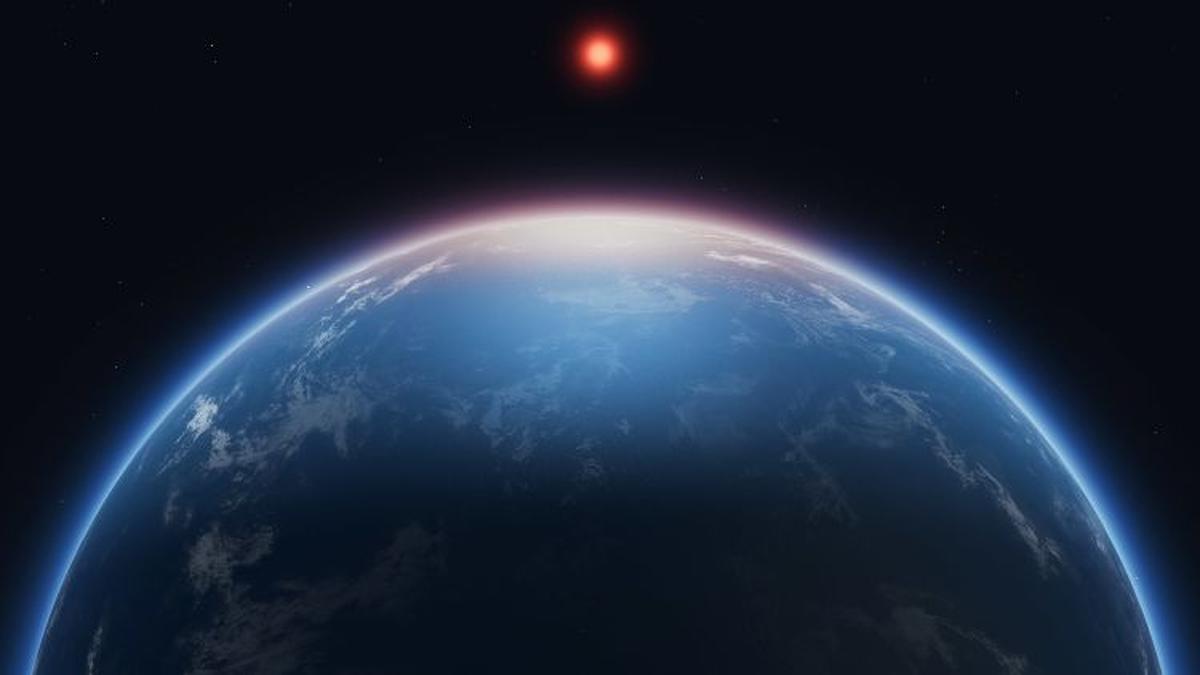Physical Address
304 North Cardinal St.
Dorchester Center, MA 02124
Physical Address
304 North Cardinal St.
Dorchester Center, MA 02124

Scientists using the James Webb Space Telescope (JWST) may have found the clearest signs of alien life yet—on a planet 124 light-years away. Today, a research team led by the University of Cambridge announced possible biosignatures in the atmosphere of Exoplanet K2-18 b, a “Hycean” world orbiting a red dwarf star in the constellation Leo.
The potential evidence? Dimethyl sulfide (DMS)—a gas that, on Earth, is only produced by living organisms like ocean plankton.
Takeaway: This could be the closest we’ve come to detecting alien life.

Discovered in 2015, Exoplanet K2-18 b is a sub-Neptune about 8.6 times the mass of Earth. It orbits within the habitable zone, where temperatures could allow liquid water to exist.
Scientists believe the planet may have a hydrogen-rich atmosphere and a global ocean—ideal conditions for supporting life as we know it.
Takeaway: Its size, atmosphere, and orbit make it a prime target in the hunt for life.
JWST observed Exoplanet K2-18 b as it passed in front of its star, analyzing how light filtered through the atmosphere. That light revealed the chemical fingerprint of DMS, as well as methane and carbon dioxide.
Earlier hints of DMS in 2023 were weak, but this time, the data from a different instrument on JWST provided a stronger signal, boosting confidence.
Takeaway: DMS is a known biosignature—but the detection is still considered preliminary.

Despite the buzz, researchers aren’t ready to confirm alien life. Why?
Takeaway: It’s promising, but nowhere near proof.
This isn’t the first time potential biosignatures have sparked excitement, only to fade under scrutiny. A 2024 study cast doubt on earlier DMS findings. Some astronomers argue that definitive proof of alien life will require direct sampling, which isn’t feasible at this distance.
Takeaway: Skepticism remains high—and rightly so.
This discovery comes at a time of geopolitical tension and scientific mistrust. Ongoing U.S. Pentagon leak investigations could cast shadows over sensitive breakthroughs like this, especially if claims are mishandled or exaggerated.
Meanwhile, countries like Japan—deep in trade talks with the U.S.—might see global science partnerships, including space, as leverage in negotiations.
Takeaway: Discoveries like this can ripple through diplomacy, trust, and policy.
If life is ever confirmed on Exoplanet K2-18 b, it could reshape everything from space funding to global alliances. Nations might redirect resources toward exoplanet research, sparking new collaborations—or rivalries.
Japan, the EU, and India, all with growing space programs, may push for seats at the table as space diplomacy rises in importance.
Takeaway: The search for life isn’t just scientific—it’s geopolitical.

Exoplanet K2-18 b has become the most exciting candidate in the search for extraterrestrial life. The potential detection of dimethyl sulfide is groundbreaking—but far from conclusive.
Scientists stress the need for more observations, peer review, and careful communication to avoid false alarms or media-driven hype.
Takeaway: This is a step—not a leap—toward answering one of humanity’s biggest questions: Are we alone?
Daily News. No B.S. No Fluff. Just What You Need to Know.